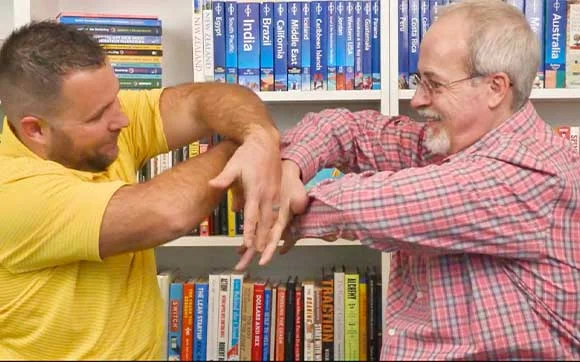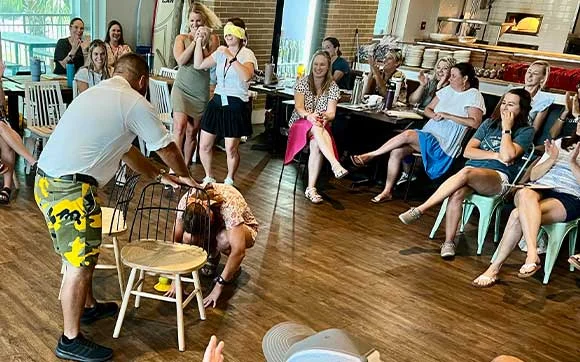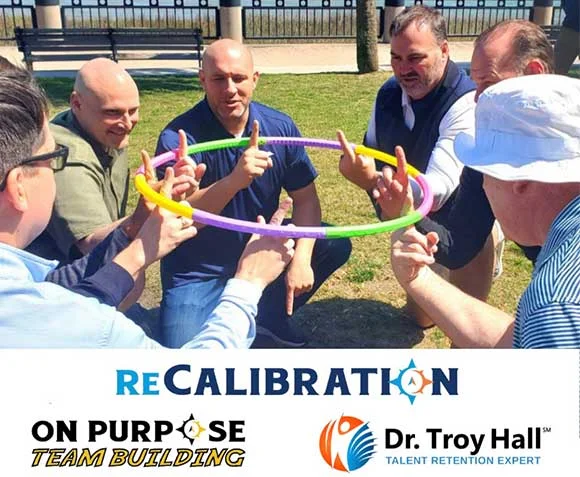Call Us: +000 000 000

Participants are challenged to overcome language barriers, maneuver around obstacles, and apply what they observe from one team outing to the next. They may not develop a plan prior to the game master saying “start.”
During the explanation of the game, the leaders seem fairly confident they can accomplish the task until they realize the nature of the barriers and obstacles.

The one serving as the “eyes” is the only one who can see where the ball and cone have been placed. Both the “body” and the “voice” are blindfolded. Given these parameters, the body may only move based on instructions provided by the “voice.” The “voice” may only speak from the implied instructions from the “body” who has permission to give commands to the “voice” through HR appropriate touching.
Those not selected to participate in one of the three teams serve as observers and play an important role during the debriefing.

Afraid of making a mistake? Fear the choice made is not a popular one? Will failure inhibit growth, development, and advancement?
These questions are real and the mindset behind them often paralyzes the leader from being innovative or creative. Creative thinking requires leaders to have a willingness to be wrong, experiment, and assume a “moderate risk of failing” thought process.
The objective is to practice becoming comfortable with non-blame worthy mistakes as learning opportunities. This process will allow for initiative and logic even if the result is less desirable. Ultimately, creative thinking leads to innovation. Innovation leads to revenue. Creativity = Value.
This anecdotal tale brings emphasis for the need of ridiculousness to be part of the creative process. In brainstorming, all ideas are accepted and documented. Once ideas have been generated, then it is time for the process to qualify the recommended solution.
Conflicts naturally arise when communication between people involves misunderstandings, unclear expectations, skepticism, unresolved dialogue, and mistrust.
Following Dr. Troy’s proven Cohesive Communication four step process prepares individuals for conversations to gain insight, uncover truths, and/or move ideas forward.
Build on the framework of a Cohesion Culture™ where people are seen and heard, individuals are valued for the meaningful contributions they make, and every individual has the opportunity to be needed and trusted.

Participants learn to replace “why?” questions in step 3 of the process. Through open-ended, non-leading questions, the interviewer will discover the “why” by rephrasing questions to be open and non-leading. Eliminating “why” from the structured series of questions keeps the interviewee from going into defense mode. Cohesive Communication teaches individuals a four step process Dr Troy calls “S.E.E.D.
During the Cohesion Culture™ 4 C’s session, participants will experience creative, hands-on activities that translate to a corporate environment. A customized, interactive approach is aimed at turning real world, day-to-day problems into puzzles that can be solved through a harmonious and unified team. The expertise learned through modules and challenges encourage inspired leadership, with learned skills and benefits carrying well beyond the boardroom.
Participants will experience:
Team Building and Bonding: Reinforce and create a sense of camaraderie through team building activities that go beyond the ordinary, creating lasting connections among team members






